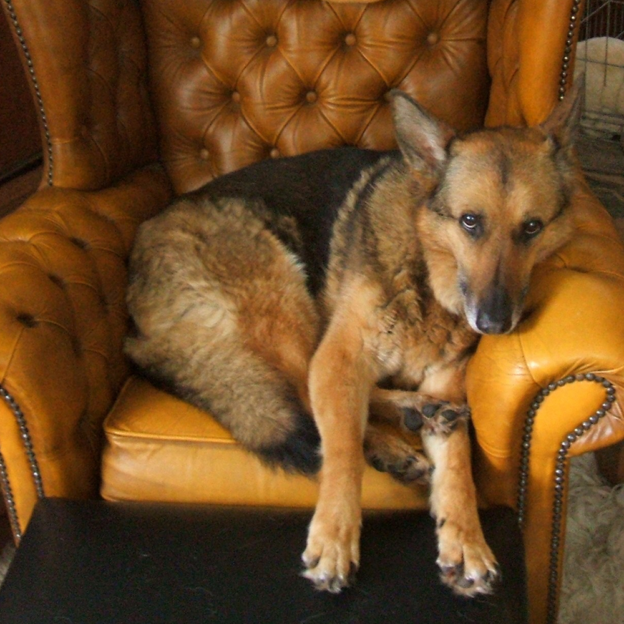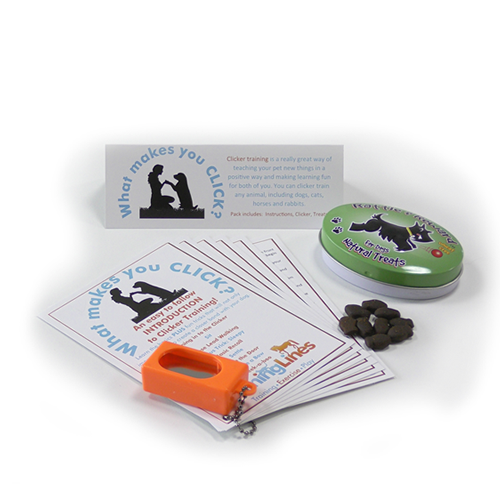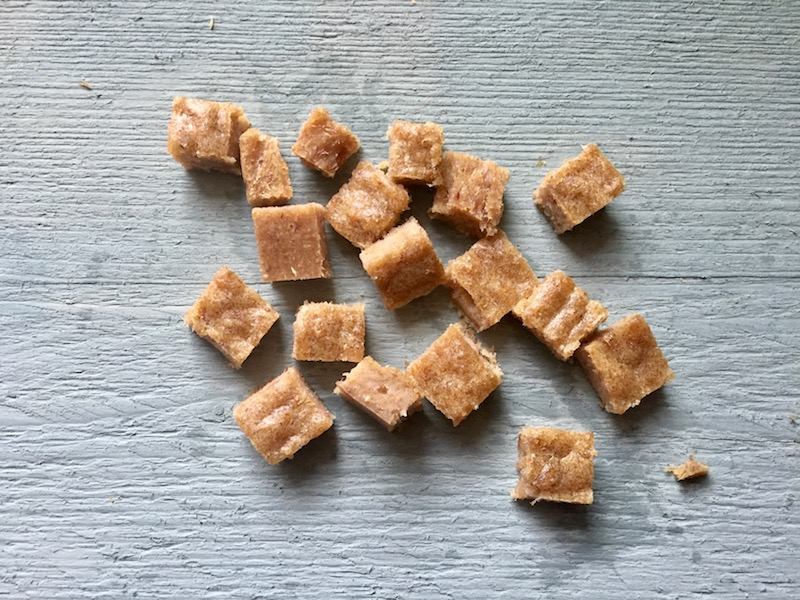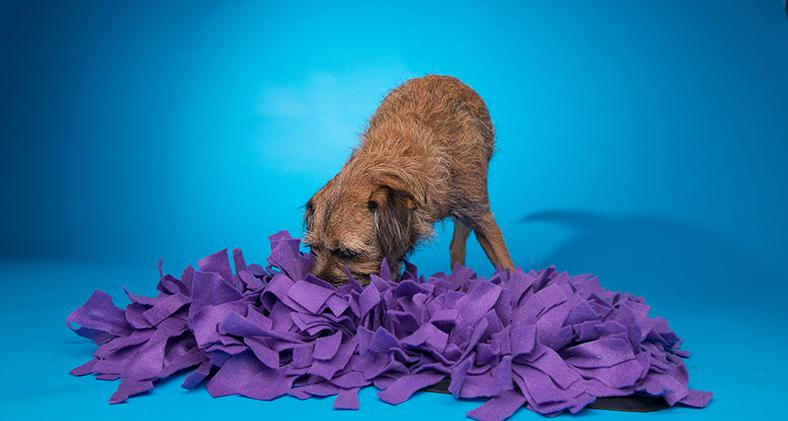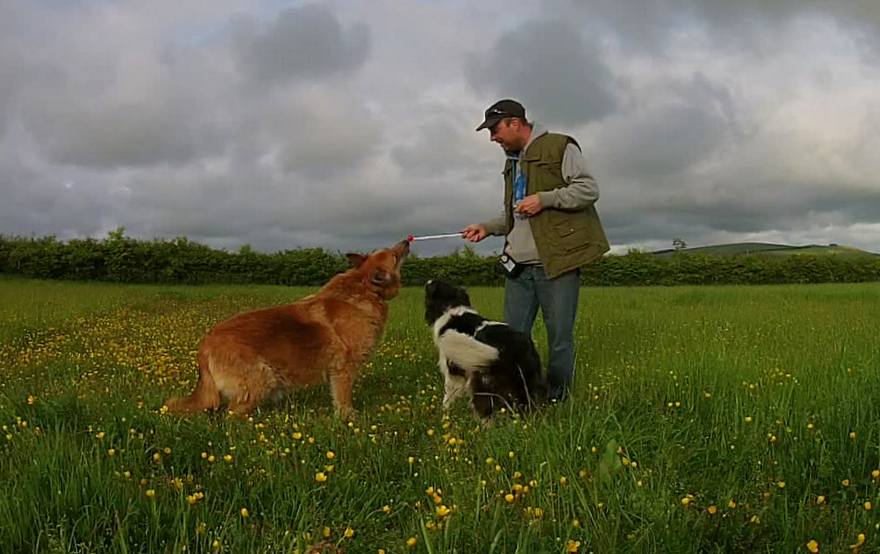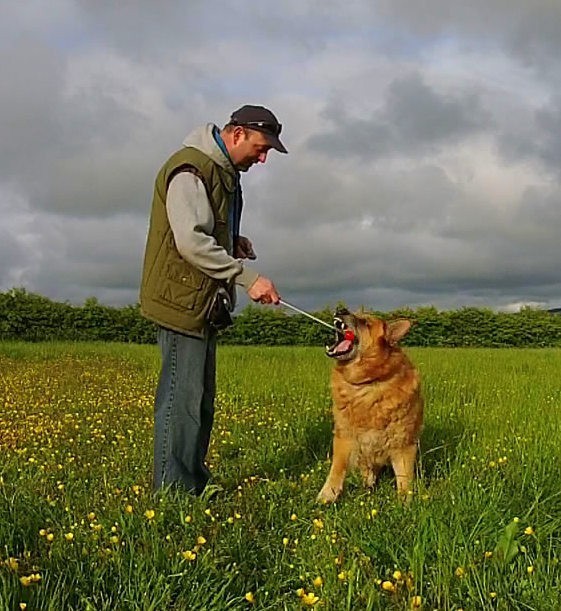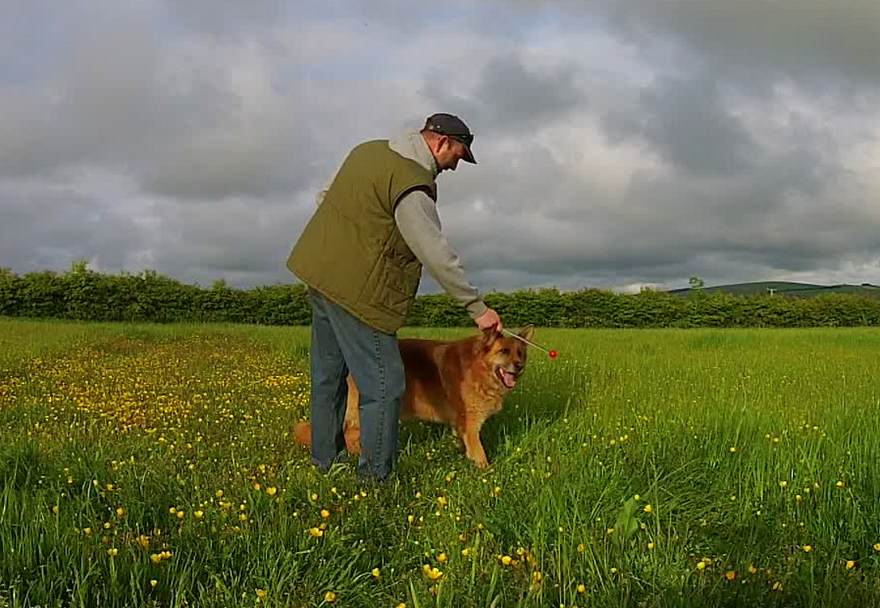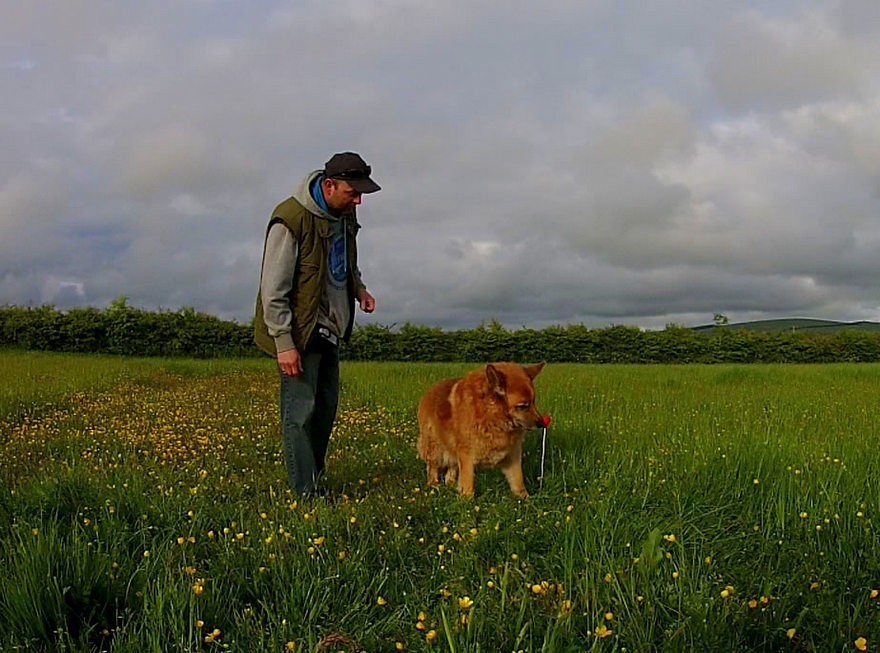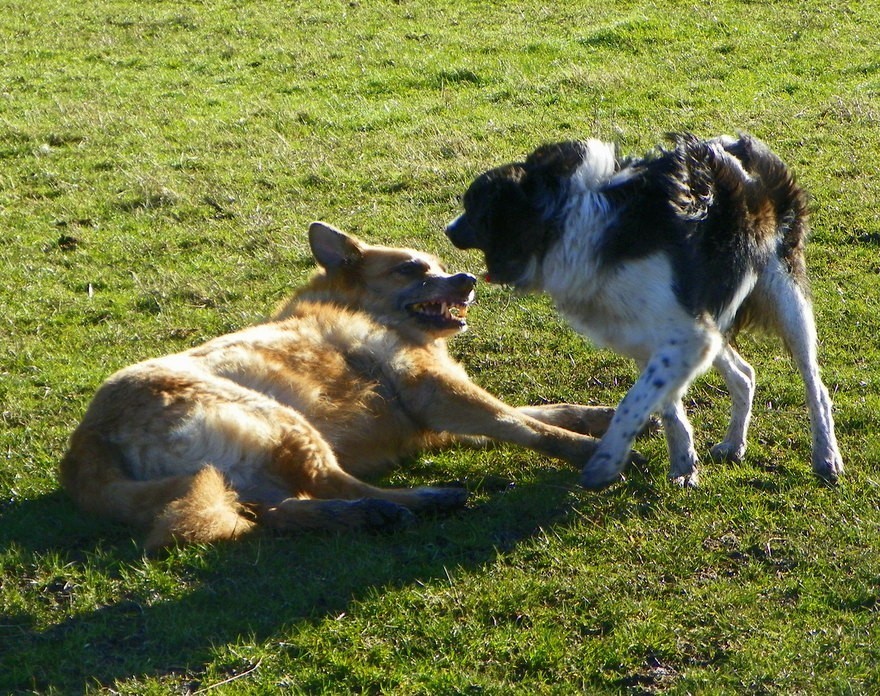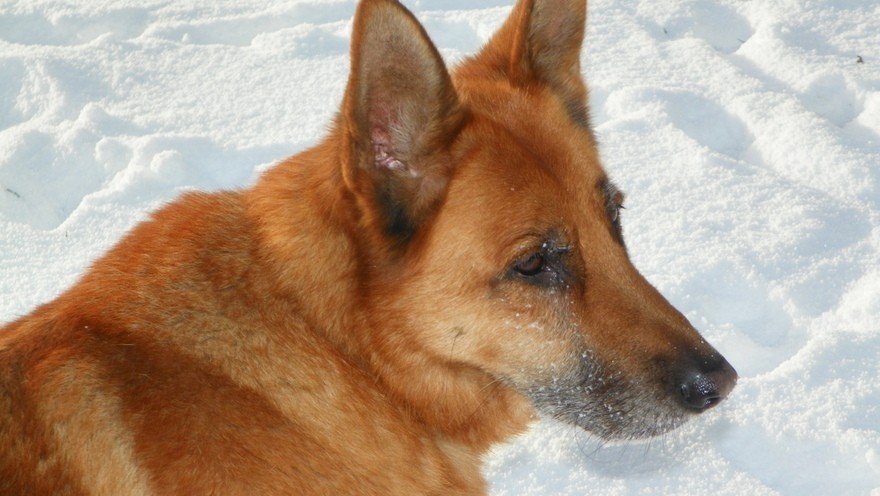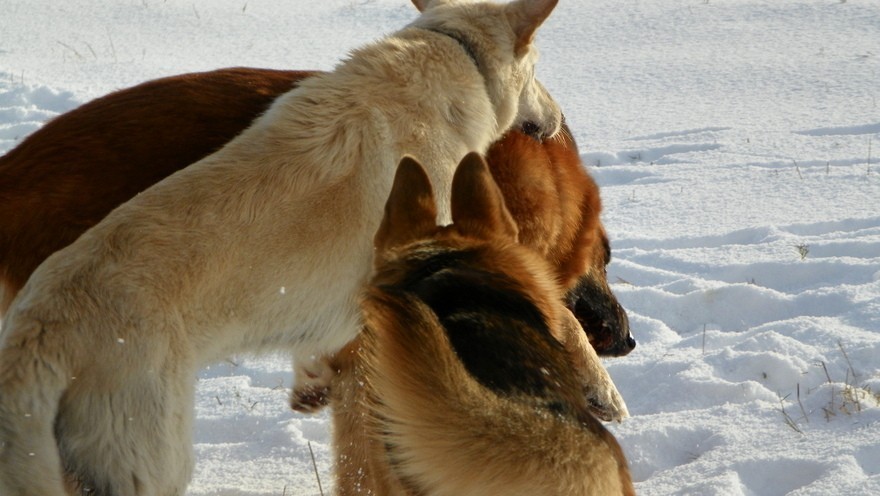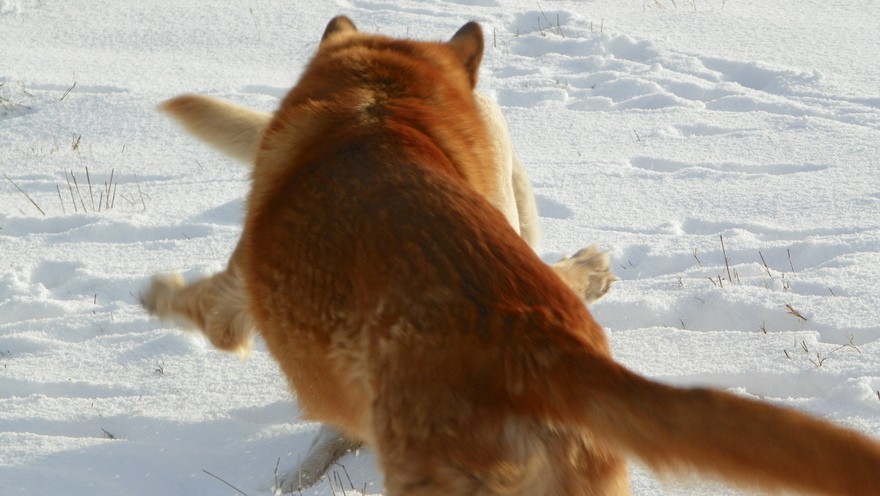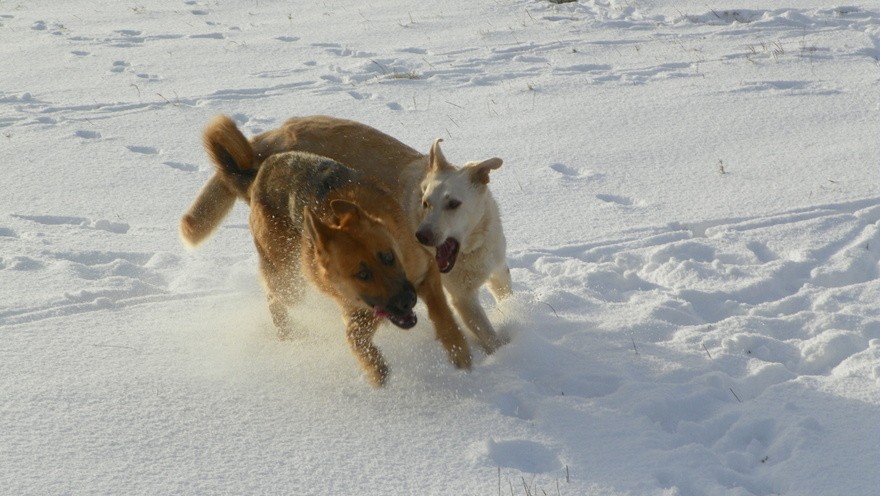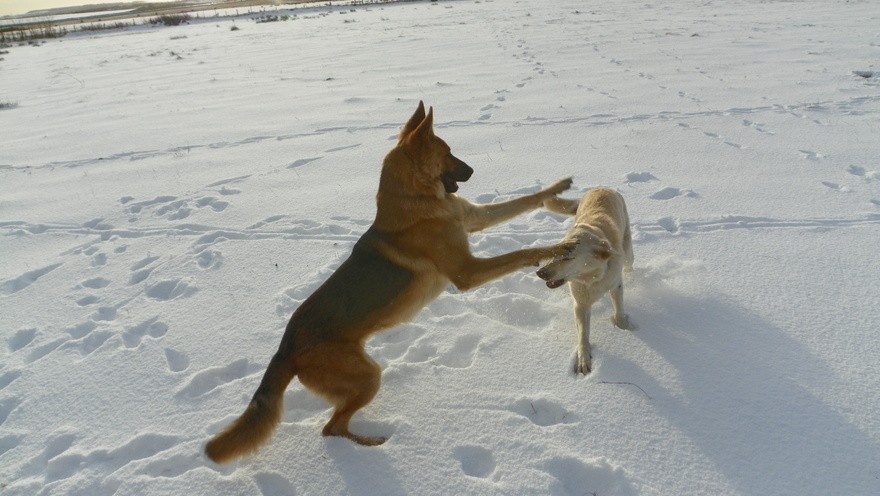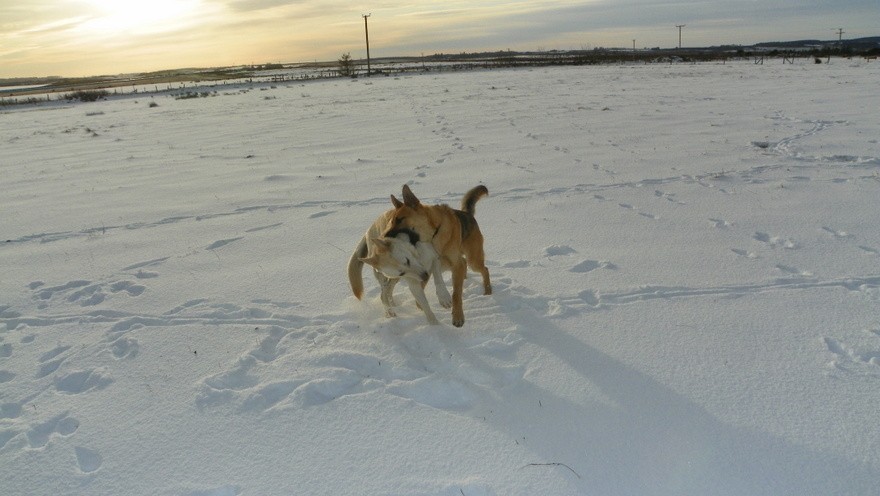
Left to right: Fin, Amy, Sophie, Blitz and Molly
Out of Control
Back in 2002, we were the confused owners of five German Shepherds. Their behaviour was appalling and we were losing control. Every morning we would take them to the nearby army ranges for their morning walk. We found ourselves going earlier and earlier in the hope that we wouldn’t meet other dog walkers because if we did, it would turn into utter chaos.
We realised we needed to do something about the situation and we consulted dog behaviour expert, Angela Stockdale of The Dog Partnership. Her advice was ‘they need a curfew‘. We were even more confused if we didn’t take them out, how would they get the exercise they needed? They would become even worse, surely.
We decided to put our scepticism aside and follow her advice. For three months we didn’t take them out for walks. Their stress levels that had been escalating day on day during the walk, began to come down.
Life without walkies
But you can’t just stop walking your dog and leave it at that. The morning walk had to be replaced with some other activity. For us it was clicker training and to say it was a life-saver is not an exaggeration. We scheduled short five-minute sessions several times a day, individually for each dog. It enabled us to get to know each one of them far better, learn their strengths and weaknesses, what motivated them and what bored them.
In no time at all, they weren’t rushing to the front door at 5 am, barking and waking the whole neighbourhood. They were more relaxed. When it came to training sessions, we did various different things with each of them. We had a lot of glass doors and when one was doing their training session, the others would watch.

Molly (left) does the tango with Fin
Molly, who was a timid girl, learned to dance and her confidence grew. Fin, who was our newest rescue, learned some manners and how to behave around ladies!

Amy on her skateboard
Amy who was frankly a bit of a thug diverted her attention to skateboarding.

Amy (left) and Sophie at the top of the stairs
Sophie was a master of the KONG. She would empty it of every last crumb by taking it to the top of the stairs and dropping it down.
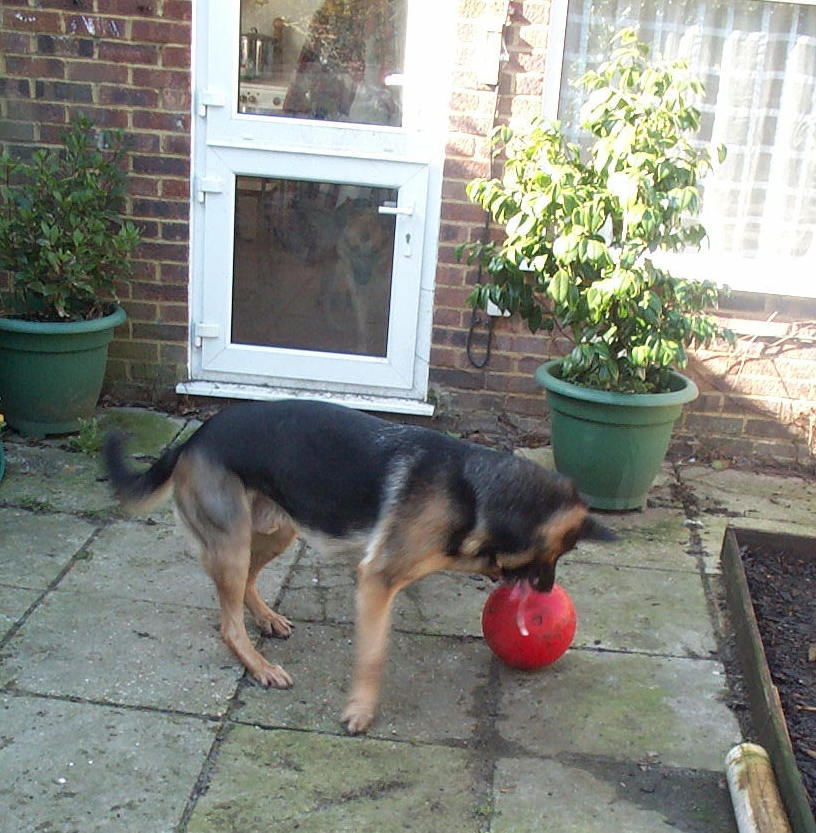
Blitz with his beloved Jolly Ball
Blitz, our first rescue boy who was a real gentleman, loved the Jolly Ball and would spend ages playing with it on his own. Both him and Fin mastered the peek-a-boo trick (see our What Makes You Click Training Cards for this trick) and many others.
Did it work?
So, what was the result of our three-month curfew? We had calmer, better-behaved dogs that we knew as individuals. They could entertain us and show off their tricks which they really enjoyed. Who doesn’t enjoy praise for a job done well? It was time well spent and we were able to gradually reintroduce them to the outside world.
What you can do right now
Why not give clicker training a try? We have Clicker Training Cards, that come complete with clicker and treats, or download our What Makes You Click? cards absolutely free and get started right away.
You will need lots of tasty Training Treats which we have in abundance, or why not make your own. Most people have a tin of tuna, flour and eggs in the house. This recipe will get you up and running in no time: Tillies Tuna Cake Recipe.
Snuffle Mats are becoming an increasingly popular game for dogs and cats. If you fancy a challenge how about making your own Snuffle Mat to keep them entertained when you’re flagging. An old doormat and some t-shirts should suffice to complete this excellent tutorial from the Dogs Trust.
Learn to love the curfew
Your dogs may not be badly-behaved and in need of a curfew, but it has been forced on us all and we have an opportunity to really make the best of it by embracing it and spending quality time with our furry friends. You never know, both dog and owner could learn something new.


